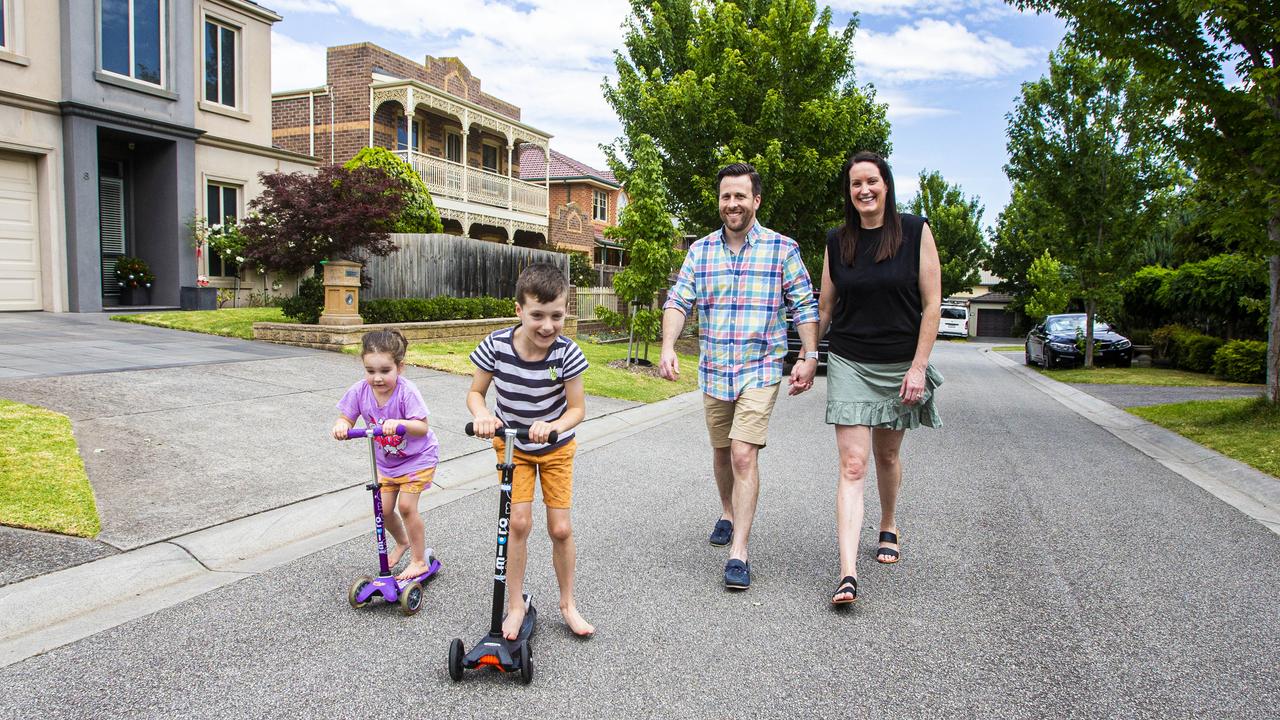Family life in Australian suburbs offers a compelling portrait of comfort, community, and connection. With expansive backyards, low crime rates, and access to quality schools, Australian suburbia has become the ideal landscape for families seeking balance and well-being. Suburban areas such as Glen Waverley, Lane Cove, and Ellenbrook continue to attract young couples and growing households looking to escape the congestion and skyrocketing costs of inner-city life. The appeal lies not only in affordability but also in the lifestyle it fosters—one rich in parks, cultural diversity, and supportive communities. Data from the Australian Bureau of Statistics underscores that more than 60% of Australian families now reside in suburban zones, demonstrating a nationwide preference for these lifestyle advantages.
In these serene neighborhoods, safety and education are cornerstones of daily life. Communities benefit from strong Neighborhood Watch programs and proactive local councils that keep streets well-lit and parks family-friendly. Parents have access to some of the best-rated schools, both public and private, with institutions like Balwyn High School consistently outperforming national academic averages. Moreover, essential childcare services are widely available, as shown in the comprehensive childcare directories maintained by the Australian Children’s Education & Care Quality Authority (ACECQA).
Adding to the suburban advantage is the accessibility of modern infrastructure and wellness services. Projects like the Sydney Metro and Melbourne’s Suburban Rail Loop have drastically improved commuting for working parents, shaving hours off weekly travel times. Combined with the rising availability of remote work, thanks in part to insights from the Australian Institute of Family Studies, families can now enjoy better work-life harmony. The result is more time for connection, recreation, and rest—pillars of a healthy family life. Health initiatives from organizations like the Heart Foundation reveal that suburban families tend to engage more regularly in physical activity, benefitting from their proximity to parks and leisure centers.
Cultural diversity further strengthens suburban communities. Families from all over the world settle in places like Dandenong or Auburn, where they find not just homes but a shared cultural heartbeat. Local councils, such as City of Parramatta, host numerous cultural festivals each year that bring neighbors together in celebration. Education systems have adapted accordingly, with schools offering a variety of language programs supported by the Department of Education, Skills and Employment.
Importantly, new migrants receive robust support upon arrival. Organizations like Settlement Services International help families adjust with English classes, employment services, and housing aid, creating a springboard for success in their new suburban homes. Whether it’s the lush greenery of outer Brisbane, the cultural tapestry of Melbourne’s east, or the tranquil cul-de-sacs of Adelaide, family life in Australian suburbs remains one of the most rewarding pathways for those seeking a safe, fulfilling, and connected lifestyle in the country.
Suburban Serenity and the Aussie Dream
Spacious Living with Affordable Housing
In comparison to urban centers, Australian suburbs offer more space at a lower cost. According to CoreLogic, the median house price in Sydney’s outer suburbs like Penrith is approximately AUD 830,000, significantly lower than the AUD 1.6 million average in central Sydney. This price difference allows families to afford larger homes with backyards, a key component of the traditional “Aussie Dream.”
Peaceful Environment and Low Crime Rates
Suburbs such as Berwick in Melbourne or Carindale in Brisbane report lower crime rates than their city counterparts. The Australian Bureau of Statistics (ABS) indicates that areas categorized as “outer suburban” have 30% fewer reported incidents of crime per 100,000 residents compared to inner-city zones.
Accessibility to Nature and Parks
Family life in Australian suburbs thrives due to the abundance of green spaces. For example, suburbs like Lane Cove in Sydney offer extensive parklands and bushwalks. The ABS notes that 83% of suburban households live within 400 meters of a public park, promoting outdoor activities and physical health.
Transportation and Infrastructure Growth
While once criticized for poor connectivity, suburbs now benefit from expanded rail lines and express bus services. The Sydney Metro Northwest project and Melbourne’s Suburban Rail Loop aim to improve commute times, connecting families to jobs and services more efficiently.
Quiet Nights and Stronger Community Bonds
Suburban areas offer a quieter lifestyle, which is conducive to family life and better sleep health. Research from the Sleep Health Foundation in 2022 linked reduced urban noise pollution with improved child sleep quality. Family life in Australian suburbs is enhanced by this tranquility, creating a nurturing space for all ages.
Raising Children in Safe and Supportive Communities
High-Quality Public and Private Schools
Suburban families enjoy access to top-tier education. In 2023, schools like Balwyn High in Melbourne and Cherrybrook Technology High in Sydney ranked among the nation’s best public institutions. Over 70% of suburban parents rate their children’s schools as “excellent” or “very good” according to a National Schools Survey.
Access to Childcare and Early Learning
Australian suburbs often feature well-distributed childcare centers. Data from the Department of Education shows that in suburbs like Point Cook (VIC) and Ellenbrook (WA), the ratio of childcare places per 100 children under five is higher than the national average of 0.83. This availability supports dual-income families.
Safe Streets and Community Watch Programs
Family life in Australian suburbs is reinforced by initiatives like Neighborhood Watch, active in 90% of Australian suburban LGAs (Local Government Areas). These programs reduce petty crime and increase parental confidence in letting children play outdoors or walk to school.
Youth Sports and Recreational Opportunities
Local councils prioritize family-centric recreation. For example, the City of Stirling in WA allocates over AUD 8 million annually to community sports programs. Suburbs host junior cricket, netball, and swimming clubs, fostering physical development and social engagement in youth.
Parent Support Networks and Community Groups
Parenting groups and local council support services flourish in suburbs. Platforms like Playgroup Australia and local Facebook parent hubs provide emotional and practical support to parents. Family life in Australian suburbs often includes a collaborative parenting culture strengthened by these connections.
Work-Life Balance and Lifestyle Advantages
Flexible Workspaces and Remote Options
The post-pandemic rise of hybrid work has reshaped suburban living. According to the Australian Institute of Family Studies, 67% of suburban families report improved work-life balance due to flexible working conditions. Suburban homes often include home offices or studies, supporting this trend.
Reduced Commute Stress
Commute times in suburban areas are improving. The ABS states that suburban commuters in Perth and Adelaide save 20–30 minutes daily compared to their counterparts in inner cities due to better planning and road networks. This saved time contributes directly to improved family routines and reduced parental burnout.
Access to Local Amenities and Services
From supermarkets to medical clinics, suburban areas are increasingly self-contained. A 2023 study by Infrastructure Australia revealed that 76% of suburban residents can access essential services within a 15-minute drive. This proximity helps streamline everyday life and allows more time for family.
Health and Wellness-Oriented Lifestyle
Suburban planning in cities like Canberra and Hobart includes wellness-focused zoning. Parks, gyms, and family clinics are embedded into suburban layouts. The Heart Foundation of Australia found that suburban families engage in 30% more weekly physical activity compared to urban families, boosting overall well-being.
Cost of Living and Economic Freedom
Family life in Australian suburbs often translates to greater economic flexibility. Lower housing and transportation costs mean families can afford more leisure activities, holidays, and savings. In 2022, the average suburban household saved AUD 6,200 more annually than similar city households, according to CommBank data.
Cultural Diversity and Community Connections
Multicultural Suburbs and Integration
Family life in Australian suburbs reflects Australia’s rich multicultural makeup. Suburbs like Dandenong (VIC) and Auburn (NSW) feature high proportions of residents born overseas—up to 65%, based on ABS census data. This diversity fosters cultural exchange and acceptance.
Religious and Cultural Centers
Many suburbs host mosques, temples, churches, and cultural halls. For example, Glen Waverley in Melbourne features Hindu temples, Buddhist centers, and Chinese associations, ensuring families can maintain spiritual traditions while integrating into broader Australian society.
Community Events and Cultural Festivals
Local councils frequently organize cultural events. The Parramatta LGA, for instance, held 36 cultural festivals in 2023 alone, celebrating everything from Lunar New Year to Diwali and Eid. These events allow children and families to engage in inclusive and celebratory experiences.
Linguistic Diversity in Education
Suburban schools increasingly offer language programs and cultural studies. In 2023, over 1,500 schools nationwide offered second-language programs, with Mandarin, Arabic, and Vietnamese being common in multicultural suburbs. Family life in Australian suburbs supports bilingual development and multicultural awareness.
Support for New Migrant Families
Suburbs often serve as first homes for migrant families due to affordability and supportive networks. Government-funded programs like Settlement Services International offer English classes, employment support, and housing guidance, particularly in outer-metropolitan regions. This strengthens the long-term integration and prosperity of migrant households. Family life in Australian suburbs benefits greatly from this inclusive ecosystem.




